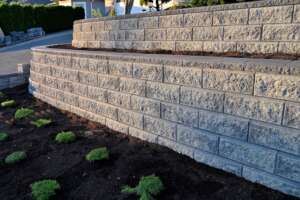Most Popular Types of Retaining Walls
September 10
Whether your home’s landscape is sloping or you simply want to enhance its appearance, a supporting structure that is both functional and stylish is essential. You can easily reach out to a reputable company in San Diego, CA and check out the solutions they offer for building a retaining wall.
This hardscape feature is available in a variety of designs, but there are also different ways of constructing it, depending on how you want to use it and how much soil it should support. Have a look at these 2 most common types.
If you’re wondering about the benefits of retaining walls and whether they’re a worthwhile investment, feel free to contact Pacific Dreamscapes. With our long experience and highly trained technicians, we’re able to help our clients find the right solution for their landscaping ideas and needs.
If you live in any of the Rancho Santa Fe neighborhoods, we’ll be happy to come and make your front or backyard really stand out. Give us a call today!
What are the different types of retaining walls?
The types of these walls vary in shape and size since supporting structures have important roles in different areas, from large construction sites to residential homes. When it comes to home landscapes, these 2 types are most common.Gravity walls
Gravity walls resist the pressure of soil with the help of their own weight due to gravitational force. They are of simple construction with the base being wider than the top. Thanks to the sloped faces, they can support up to 3m of height. A construction higher than that would make it too heavy for the ground underneath. You can easily customize this type of wall thanks to the variety of materials they’re available in. Some of the most popular materials are:- Boulders. These are long‐lasting and don’t need any refinement. They’re great if you want to keep the natural look of your landscape.
- Brick. It’s both popular and traditional and it’s quite durable. It comes in a variety of colors which you can mix for a customized design.
- Concrete blocks. These are excellent for shorter walls and they’re very simple to build. They also come in a large selection of sizes and colors.
- Poured concrete. It can support a larger amount of soil than concrete blocks, but if you’re going for aesthetics, you’ll need to add a finish since it looks rather bland.
- Masonry. Masonry walls feature specific materials and they require a skilled professional to build them structurally safe, so it’s better to avoid DIY projects since even a small mistake may have serious consequences.
- Stone. This is another natural material which easily fits in with different hardscape features. You can combine different shapes, sizes, and colors for a perfect appearance.
- Veneer. It works great as a finish for bland surfaces and it comes in thin slices of brick or stone.

 Where in San Diego, CA can I find a reliable company that can design a safe retaining wall?
Where in San Diego, CA can I find a reliable company that can design a safe retaining wall?